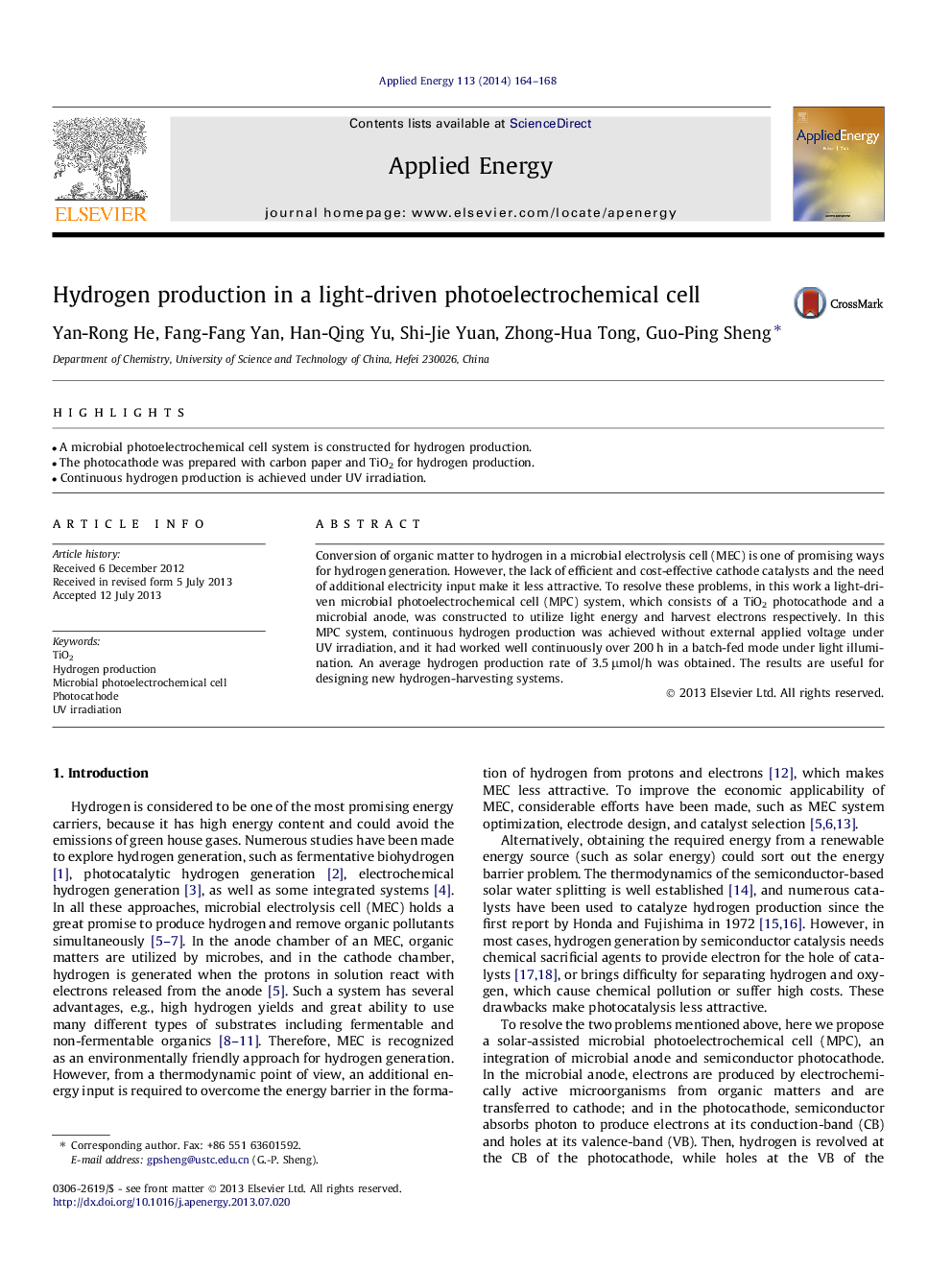| Article ID | Journal | Published Year | Pages | File Type |
|---|---|---|---|---|
| 6691867 | Applied Energy | 2014 | 5 Pages |
Abstract
Conversion of organic matter to hydrogen in a microbial electrolysis cell (MEC) is one of promising ways for hydrogen generation. However, the lack of efficient and cost-effective cathode catalysts and the need of additional electricity input make it less attractive. To resolve these problems, in this work a light-driven microbial photoelectrochemical cell (MPC) system, which consists of a TiO2 photocathode and a microbial anode, was constructed to utilize light energy and harvest electrons respectively. In this MPC system, continuous hydrogen production was achieved without external applied voltage under UV irradiation, and it had worked well continuously over 200 h in a batch-fed mode under light illumination. An average hydrogen production rate of 3.5 μmol/h was obtained. The results are useful for designing new hydrogen-harvesting systems.
Related Topics
Physical Sciences and Engineering
Energy
Energy Engineering and Power Technology
Authors
Yan-Rong He, Fang-Fang Yan, Han-Qing Yu, Shi-Jie Yuan, Zhong-Hua Tong, Guo-Ping Sheng,
